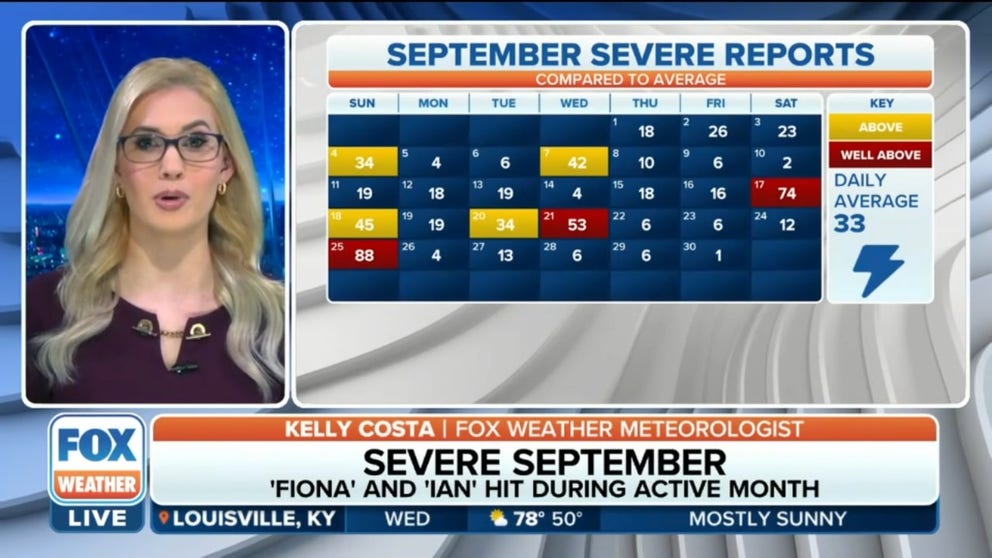Aside from Hurricane Ian, severe weather reports in US slowed in September
Take away Hurricane Ian, and September was a relatively quiet month on the severe weather front, with all modes of severe weather finishing below their long-term monthly average.
Recap of severe weather in September
FOX Weather’s Kelly Costa says tropics aside, September 2022 was a relatively quiet month in terms of severe weather reports.
Take away Hurricane Ian, and September was a relatively quiet month on the severe weather front, with all modes of severe weather finishing below their long-term monthly average.
"September's severe (weather) in a blurb would be: plenty of at-bats but few hits," said FOX Weather Senior Data Specialist Shane Brown.
September's 559 reports of severe weather were just 56% of the long-term average -- though these reports do not count damage reports from tropical systems such as Hurricane Ian, which are tracked separately. Sans Ian, seven days finished with above-average counts of severe weather reports with the most active day, Sept. 25, tallying up 88 reports on its own. That's more than twice the daily average for September.

(FOX Weather)
On the other hand, 12 days finished with 10 or fewer total reports.
Here is how each severe event fared.
Less than a dozen non-Ian tornadoes in September
Much like August, outside of land-falling tropical systems, September is not a month known for prolific tornado activity.
HOW TO WATCH FOX WEATHER ON TV
This September would end with just 19 total tornado reports -- and unlike the wind and flood reports, this does include twisters spawned from tropical systems. The 19 tornadoes were just 38% of the long-term average of 50, making this September the 6th quietest since 1950 and the least busy since 2009's eight.
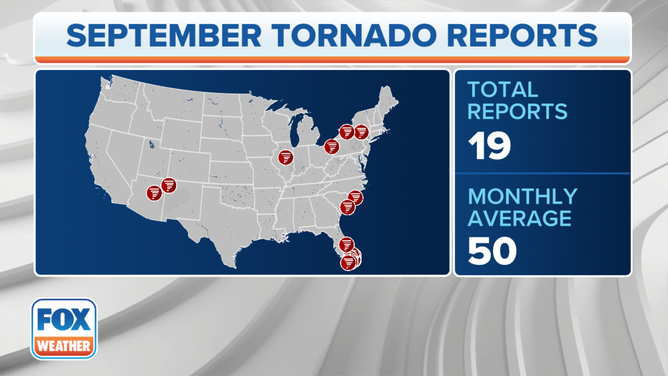
(FOX Weather)
Seven states saw tornadoes this past month, with Florida seeing the lion's share with 11 -- all from the outer bands of Hurricane Ian as it approached Florida.
The other six states (Arizona, New Mexico, Illinois, Ohio, New York, and South Carolina) each saw two or fewer.
The strongest of these tornadoes was an EF-2 that struck near Boca Raton and Delray Beach, Florida, inside Ian's bands.
IAN SPAWNS EF-2 TORNADO, DAMAGING SOUTH FLORIDA APARTMENT COMPLEX
This tornado was responsible for minor damage and caused injuries to two people.
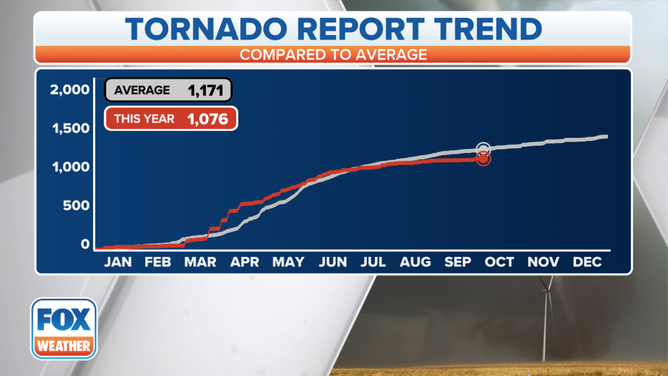
(FOX Weather)
For the year, the U.S. has accumulated 1,076 reports of tornadoes across 44 states. That remains below the long-term average to date of 1,171. Mississippi, Texas, and Alabama lead the nation with 114, 108, and 80 reports, respectively. None of these states saw a tornado in September.
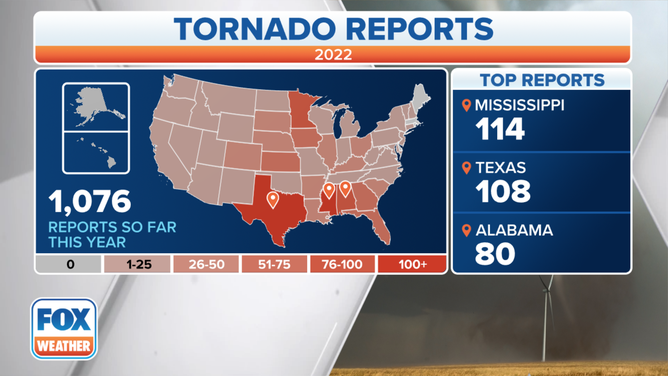
(FOX Weather)
A break from ‘Summer of Wind’
For the first time since April, the nation ended the month of September with a below-average count of severe wind reports – though, again, not counting Hurricane Ian's destruction.
September 2022's 454 reports of wind damage fell short of the long-term average of 536, Brown said. Forty-two states saw at least one report of wind damage this past month with Arizona taking the cake with 37 all to itself.
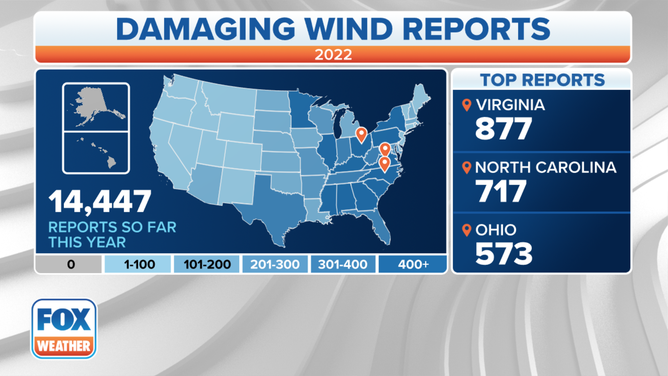
(FOX Weather)
Other big wind states this month include Kansas and Montana (36 each), New York (33), Texas (32), and Illinois (31).
The strongest thunderstorm (non-hurricane) gust comes from the outskirts of Lubbock, Texas, where an 84-mph gust was clocked during a bout of isolated afternoon storms.
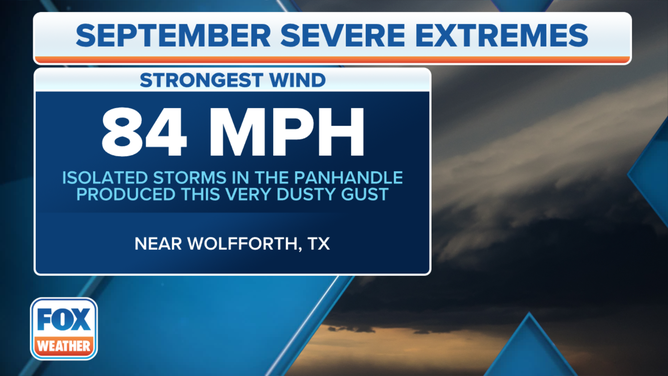
(FOX Weather)
The year, so far, has seen close to 14,500 reports of damaging wind.
Virginia continues to be the number one spot with 877 reports. North Carolina and Ohio bring up the rest of the top-three with 717 and 573 reports, respectively.
"If you're wondering, this year's wind report tally comes in 5th-most since 2005 behind 2020, 2019, 2011, and 2008," Brown said. "While 2022 has a very good chance of surpassing 2008, 2019, and 2020, it will more than likely fall short of 2011's insane 24,000-report year-end total."
Hail in short supply
There were not many hail reports for September -- just 155 reports of large hail, which is also below the long-term average of 220.
This month's hail leader was Iowa, which chalked up 62 reports of hail, but hail reports were made in 29 states.
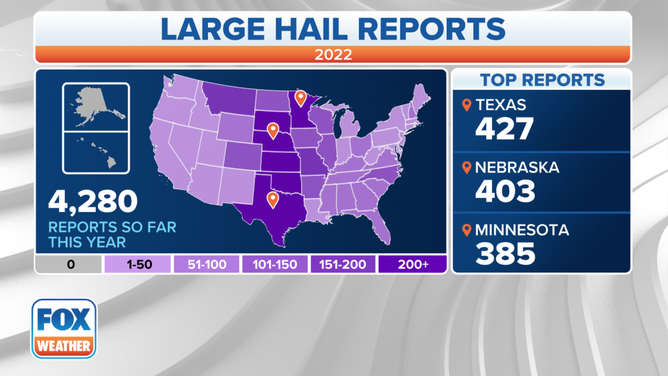
(FOX Weather)
The largest hailstone comes from Carson, Iowa, where multiple softball-sized hail reports along with photos of smashed windshields and substantial residential damage were made on the 17th.
On the year, there have been 4,280 reports of large hail, which is below the long-term average of 5,761.
Texas leads the U.S. in total hail reports with 427. Nebraska and Minnesota round out the top-three with 403 and 385, respectively.
If the year ended today, 2022 would finish with the 2nd-fewest hail reports (since 2005) behind 2021's 3,756.
Non-hurricane flash flooding well-below normal
"It's been two months since we've ended a month with below-average flash flooding reports, but September ends this small streak," Brown said, though again this excludes damage from Hurricane Ian.
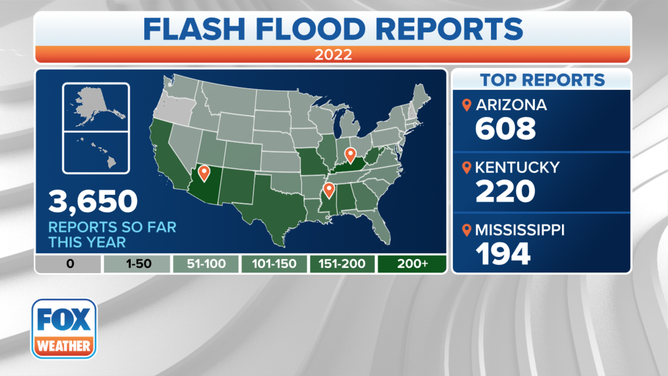
(FOX Weather)
September's 393 reports fall short of the long-term average of just over 600.
Arizona once again saw the lion's share of flash flood reports with 79, while California and Georgia were in the top three in September with 52 and 42, respectively. The 3,650 reports of flash flooding on the year are still just above the long-term average of 3,427.
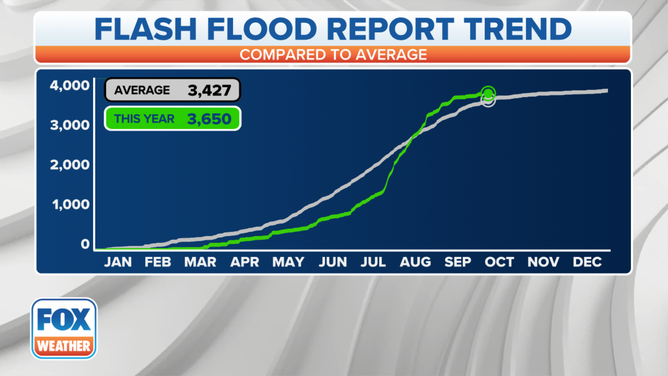
(FOX Weather)
Outside a big flooding event, it will be a photo finish to see if 2022 will finish the year above or below average.
Over 800 storm-related reports with Hurricane Ian
While Ian was excluded from all of the above tallies except for tornadoes, the storm generated over 800 storm reports on its own across four states.
Florida had 374 hurricane, tropical storm and storm surge damage reports, according to the National Hurricane Center. South Carolina had 331 and North Carolina had 145.
